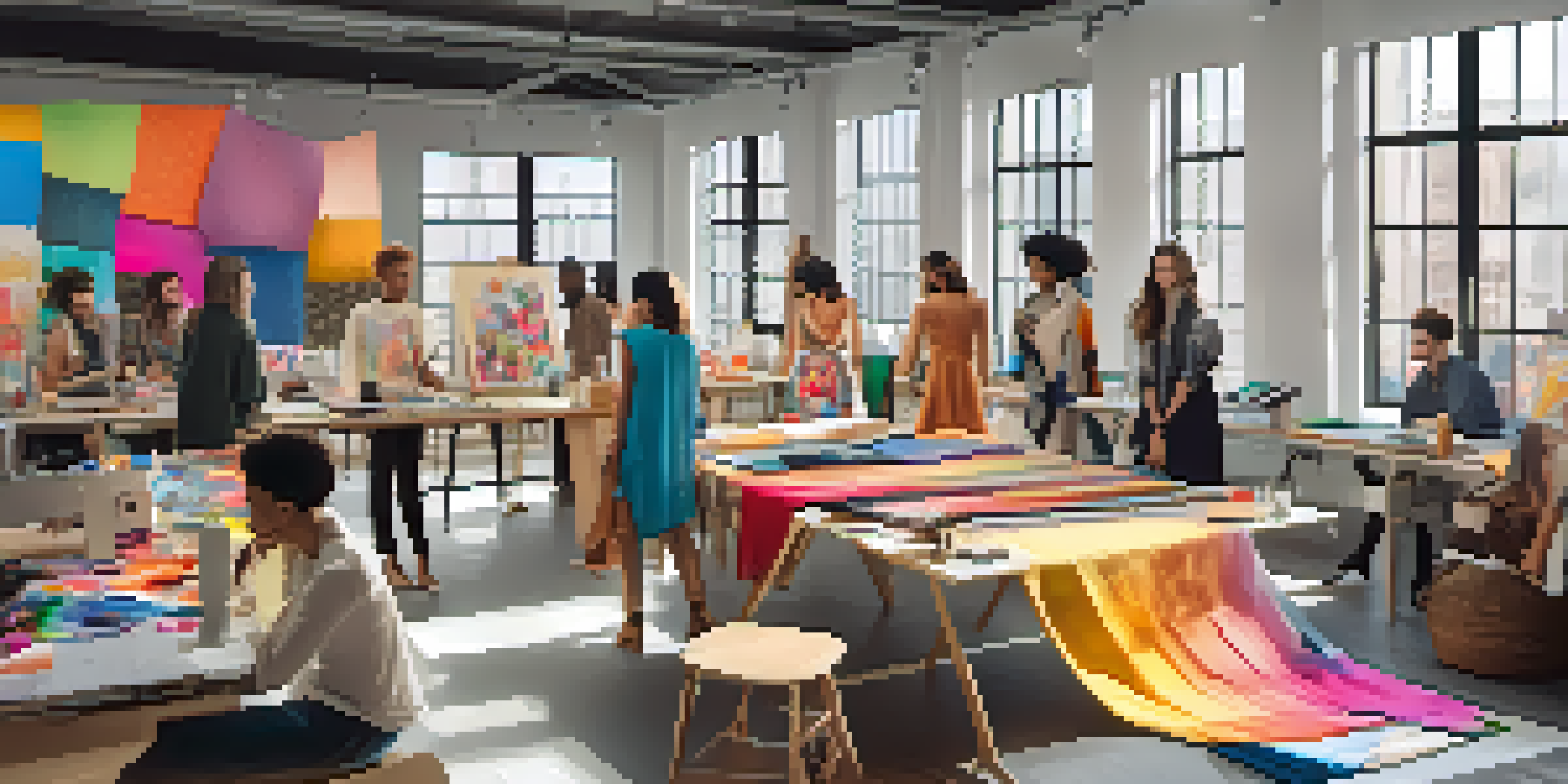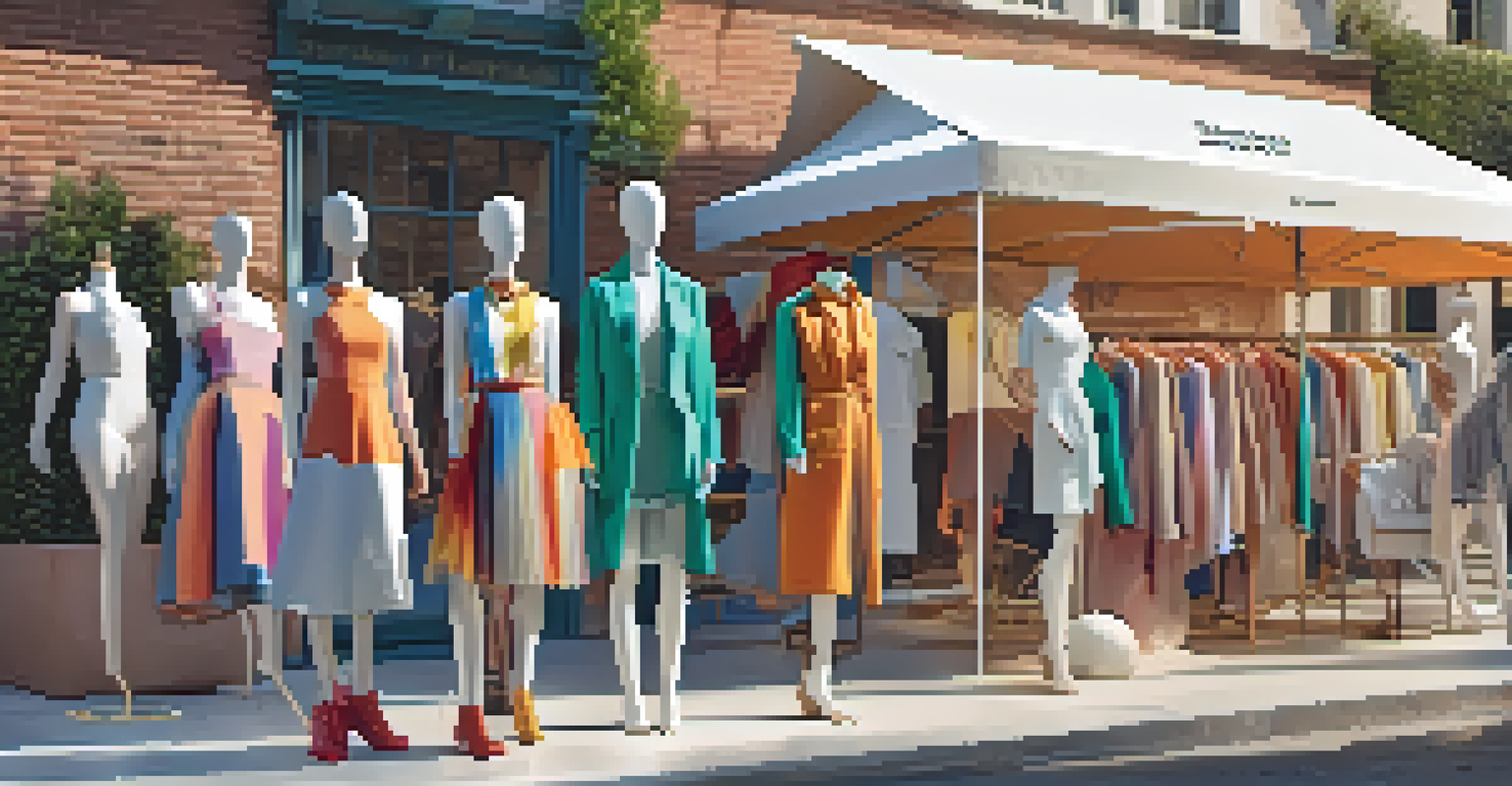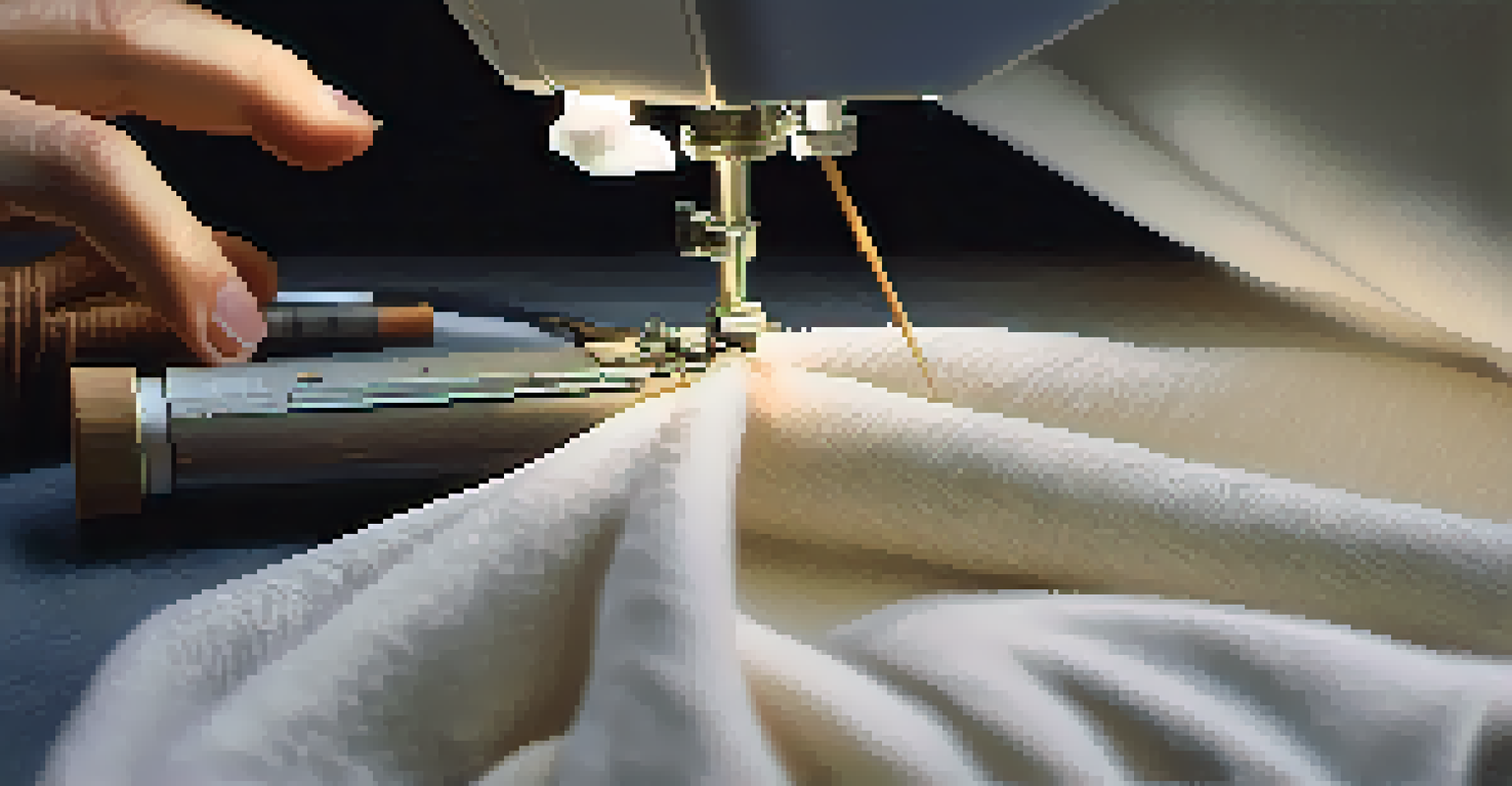How the Gig Economy Transforms Fashion Design and Trends

The Rise of Freelance Fashion Designers in the Gig Economy
The gig economy has revolutionized how fashion designers work, allowing them to freelance and collaborate on projects without the constraints of traditional employment. This flexibility enables designers to juggle multiple opportunities, fostering creativity and innovation. As a result, we see a diverse range of styles and influences emerging, reflecting the unique perspectives of various designers.
Fashion is the armor to survive the reality of everyday life.
Freelancing also means that designers can choose their clients and projects, leading to work that resonates more deeply with their personal values and aesthetics. This newfound autonomy encourages experimentation, as designers are less likely to conform to outdated corporate guidelines. Thus, the fashion landscape becomes a vibrant tapestry of ideas and trends that are constantly evolving.
Moreover, online platforms facilitate connections between designers and brands, making it easier for emerging talent to showcase their work. This access democratizes the fashion industry, allowing fresh ideas to flourish and reach consumers faster than ever before.
Collaborative Design: The Power of Crowdsourcing
Crowdsourcing has become a game-changer in the fashion industry, allowing brands to tap into the collective creativity of freelancers and consumers alike. By inviting input from a wide audience, brands can create designs that resonate more profoundly with their target market. This approach not only fosters community engagement but also helps brands stay ahead of trends by harnessing diverse insights.

For instance, design competitions and social media campaigns enable brands to gather ideas directly from their customers, leading to collections that reflect current preferences. This collaboration often results in unique pieces that might not have emerged from a traditional design process. As a result, the lines between consumers and creators blur, creating a more inclusive fashion ecosystem.
Freelancing Fuels Fashion Innovation
The gig economy enables fashion designers to work independently, fostering creativity and a diverse range of styles.
Additionally, collaborative design can lead to more sustainable practices as multiple voices contribute to the creative process. This way, the emphasis shifts towards thoughtful, intentional design that prioritizes quality over quantity, ultimately benefiting both consumers and the environment.
On-Demand Production: Fashion at Your Fingertips
The gig economy has ushered in the era of on-demand production, where fashion is no longer restricted to seasonal collections. Instead, designers can create and produce items based on real-time consumer demand. This shift not only reduces waste but also allows for a more personalized shopping experience, catering directly to individual preferences.
Sustainability is not a trend. It is a way of life.
For example, brands can release limited-edition pieces or capsule collections that respond quickly to emerging trends. This flexibility means that fashion is now more responsive than ever, which can be particularly exciting for trendsetters and influencers looking to stay ahead of the curve. Consumers appreciate the unique offerings that come from this model, as they often feel like they are part of a special community.
Moreover, on-demand production encourages designers to experiment with materials and styles without the fear of excess inventory. This innovation cycle ultimately leads to a more dynamic fashion industry, where creativity thrives and new trends can emerge swiftly.
The Influence of Social Media on Fashion Trends
Social media platforms have become vital tools for fashion designers, enabling them to showcase their work and connect with audiences directly. As a result, trends can emerge overnight, often driven by influencers and micro-celebrities who share their unique styles online. This rapid dissemination of ideas fosters a culture of immediacy, where consumers are always on the lookout for the next big thing.
Furthermore, the gig economy allows designers to leverage these platforms to build their personal brands. By sharing their creative processes, behind-the-scenes content, and final products, designers can cultivate a loyal following. This direct relationship with consumers not only boosts their visibility but also provides valuable feedback that informs future designs.
Collaboration Enhances Design Quality
Crowdsourcing allows brands to engage directly with consumers, resulting in designs that resonate more profoundly with their target market.
Ultimately, social media has transformed fashion marketing, shifting the power dynamic away from traditional advertising to a more organic, community-driven approach. This evolution means that trends are now shaped by conversations and interactions rather than solely by industry gatekeepers.
Sustainability in Fashion: Gig Workers Leading the Change
As awareness of environmental issues grows, many gig workers in the fashion industry are championing sustainable practices. Freelance designers often prioritize eco-friendly materials and ethical production methods, leading to a more responsible fashion landscape. This shift towards sustainability not only addresses consumer concerns but also sets a new standard for the industry.
Many designers are using their platforms to educate consumers about the importance of sustainable fashion, advocating for practices like upcycling and slow fashion. By sharing their stories and processes, they inspire others to consider the impact of their fashion choices. This grassroots approach to sustainability empowers consumers to make informed decisions and support brands that align with their values.
Moreover, collaborations between gig workers and established brands can amplify sustainability efforts, creating collections that highlight eco-conscious design. As these partnerships flourish, they pave the way for a more sustainable future in fashion, proving that gig workers can lead the charge for change.
The Role of Technology in Fashion Design
Technology plays a crucial role in the gig economy, transforming the way fashion designers create and distribute their work. From 3D printing to virtual reality, these innovations allow for rapid prototyping and visualization, enabling designers to bring their ideas to life faster than ever. This tech-driven approach encourages experimentation and helps designers stay relevant in a fast-paced industry.
Additionally, digital tools have made it easier for gig workers to collaborate across geographical boundaries. Designers can now work together in real-time, sharing files and ideas seamlessly, which fosters a more dynamic creative process. This collaborative spirit often leads to unique designs that incorporate diverse influences and techniques.
Sustainability Drives Fashion Change
Freelance designers are leading the charge for sustainable practices, advocating for eco-friendly materials and ethical production methods.
Ultimately, technology enhances the designer's toolkit, allowing for greater creativity and efficiency. As the fashion industry continues to evolve, embracing these advancements will be essential for both freelancers and brands striving to stay ahead of trends.
Consumer Empowerment: Shaping Fashion Trends Together
The gig economy has empowered consumers to take an active role in shaping fashion trends. With access to platforms that connect them directly with designers, consumers can voice their preferences and influence the designs that hit the market. This shift fosters a sense of ownership and investment in the fashion landscape, creating a more engaged audience.
Moreover, consumer feedback is more accessible than ever, thanks to social media and online reviews. Designers can gather insights about what resonates with their audience, allowing them to refine their creations accordingly. This collaborative relationship between designers and consumers leads to a more responsive and dynamic fashion ecosystem.

As consumers increasingly demand transparency and ethical practices, designers are compelled to listen and adapt. This evolution not only enhances the consumer experience but also encourages a more sustainable and thoughtful fashion industry, where trends are co-created rather than dictated.